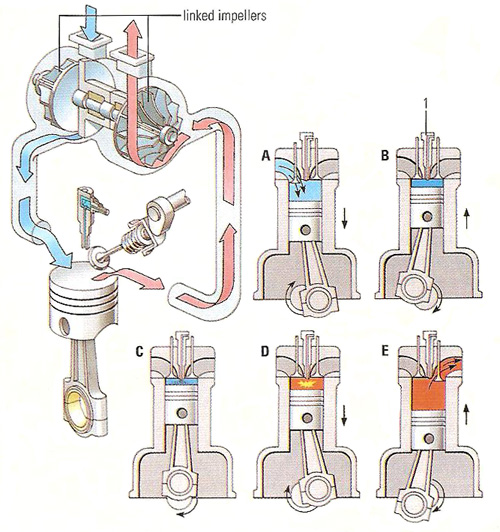diesel engine

A diesel engine is an internal combustion engine in which the heat for igniting the fuel oil is produced by compressing air. The engine, invented by Rudolf Diesel in the 1890s, is also referred to as a compression-ignition engine. The fuel-air mixture burns rapidly device and expands to drive the pistons. Diesel engines usually have electric heaters called glow plugs for warming the cylinders during starting. Once the engine has fired, the heaters may be switched off.
Key to diagram
Air is introduced into the cylinder (A). An injector squirts fuel into the cylinder where the upward stroke of the piston (B and C) compresses the mixture. In these conditions the fuel ignites spontaneously (D) and the expansion of the combustion products forces the piston down. The rotation of the crankshaft pushes the piston up (E) and the exhaust gases are expelled. In the diesel engine illustrated, a turbocharger uses the energy of the exhaust gases to force air into the cylinder via linked impellers, achieving greater compression in the cylinder.


